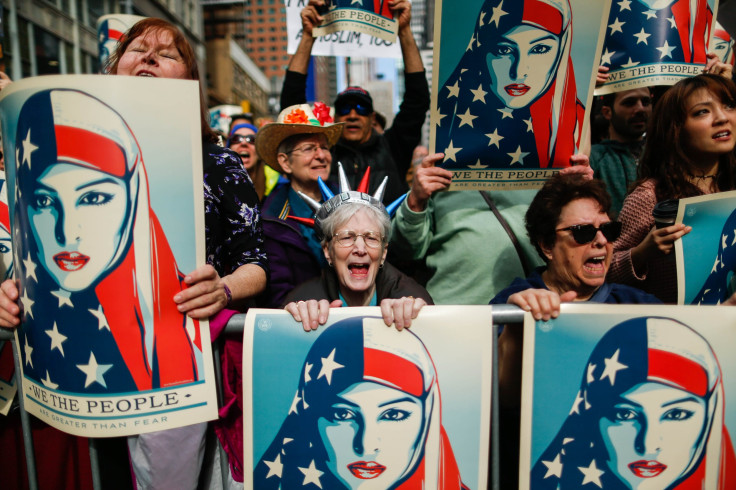How Many Muslims In The World? A True Ban Would Shut Down International Travel

President Donald Trump signed his revised executive order travel ban Monday, but like the first version, critics were quick to criticize it as effectively being a “Muslim ban.” Although it exempted Iraqi nationals and green card holders, the new order banned immigrants from six Muslim-majority nations: Iran, Libya, Somalia, Sudan, Syria and Yemen.
The American Civil Liberties Union responded with a release on its website titled, “We’ll See You In Court 2.0: Once A Muslim Ban, Still A Muslim Ban.”
Meanwhile, Amnesty International said that it was “putting anti-Muslim hatred into policy.”
“No amount of editing can make this executive order anything but what it is – blatant bigotry,” the organization said in a statement. “There are real threats to security, but this bigoted order will do nothing to make the country safer.”
Much of the opposition was based on Trump previously stating his intent to ban all Muslims from entering the United States. Shortly after the first executive order, which was later blocked in federal court, went into effect in January, former New York City Mayor Rudy Giuliani, an adviser to Trump during his campaign, said that he had been tasked with legally creating a “Muslim ban.”
The scale of a true Muslim ban would, however, be almost unfathomable. As of 2010, there were 1.6 billion Muslims in the world, roughly 23 percent of the world’s population, according to the Pew Research Center. Islam was also the world’s fastest-growing religion, and its number of followers was expected to exceed Christianity by 2070.
There were 3.3 million Muslims already in the United States, as of 2015, about one percent of the U.S. population. Muslims were expected to make up more than two percent of the population by 2050. The share of immigrants granted green cards who were Muslim doubled from five percent to 10 percent in the 20 years between 1992 and 2012.
© Copyright IBTimes 2024. All rights reserved.





















